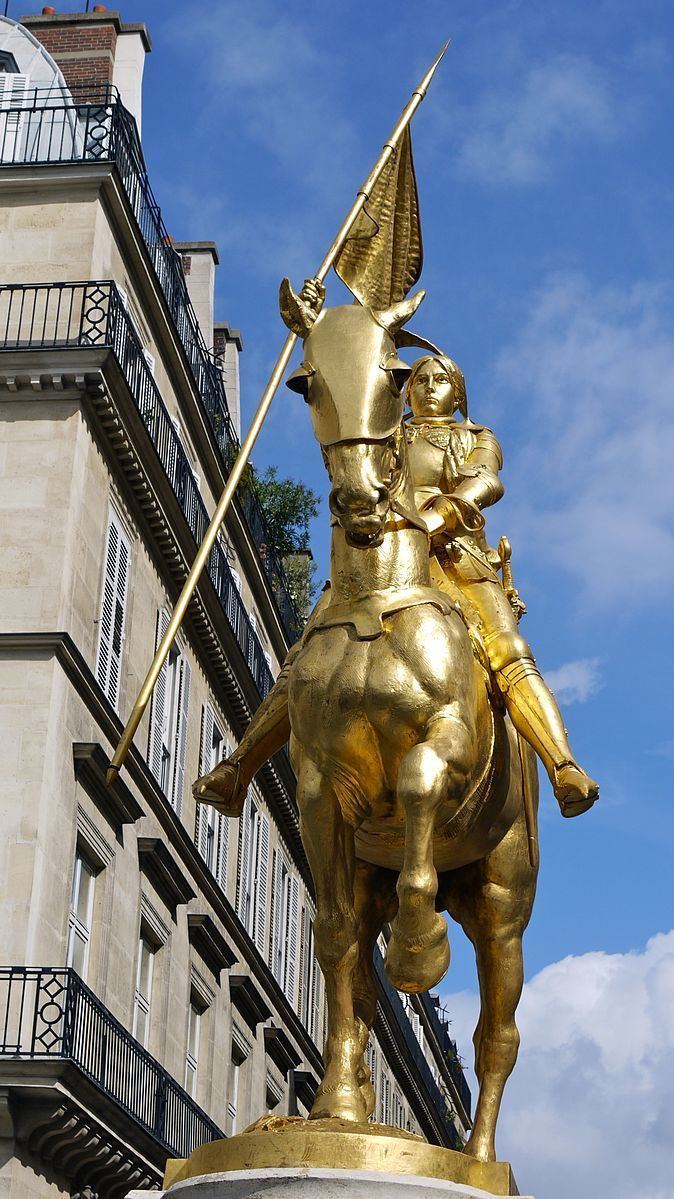 | ||
Joan of Arc (Jeanne d'Arc in French) has inspired artistic and cultural works for nearly six centuries. The following lists cover various media to include items of historic interest, enduring works of high art, and recent representations in popular culture. The entries represent portrayals that a reader has a reasonable chance of encountering rather than a complete catalog. Lesser known works, particularly from early periods, are not included. In this article, many of the excluded items are derivative of better known representations. For instance, Schiller's play inspired at least 82 different dramatic works during the nineteenth century, and Verdi's and Tchaikovsky's operatic adaptations are still recorded and performed. Most of the others survive only in research libraries.[1] As another example, in 1894, Émile Huet listed over 400 plays and musical works about Joan of Arc. Despite a great deal of scholarly interest in Joan of Arc no complete list of artistic works about her exists, although a 1989 doctoral dissertation did identify all relevant films including ones for which no copy survives.[2]
Contents
Portrayals of Joan of Arc are numerous. For example, in 1979 the Bibliothèque Municipale in Rouen, France held a gallery containing over 500 images and other items related to Joan of Arc.[3] The story of Joan of Arc was a popular subject for dramatization in the 1940s. In addition to Maxwell Anderson's play Joan of Lorraine and the Ingrid Bergman film Joan of Arc, there was also the 1948 RKO film The Miracle of the Bells starring Fred MacMurray, Alida Valli, and Frank Sinatra, about a dying film actress whose first and last role is Joan of Arc. There were also three radio dramatizations of the story of Joan during those years, one of them specifically written with a World War II framework.
Organization of this article
For purposes of classification, popular culture music is a separate section from operas and oratorios. Films include made-for-television movies and miniseries. Television covers live action series.
Advertising
Other representations
Joan of Arc's short haircut had a profound effect on women's hairstyles in the twentieth century. In 1909, the Paris hairdresser Antoine took Joan of Arc as the inspiration for the bob, which ended centuries of taboo against women who cut their hair. The style became popular in the 1920s and was associated with liberated women. Nearly all subsequent Western hair fashions are designed for women who cut their hair at least occasionally. Such haircut is still known in French as coupe à la Jeanne d'Arc (Joan of Arc's haircut).
During the Cristero War in 1927, a group of female Cristeros named themselves after Joan of Arc. They obtained money, supplies, and intelligence for the male combatants. They often smuggled weapons into war zones and cared for the wounded. By the end of the war they had 35,000 participants.
Several people have been seen as modern versions of Joan of Arc:
